Best Cat Breeds for Allergic People: Tips to Manage Cat Allergies
Do you suffer from allergies? Some cat breeds may offer you relief from dander allergies.
Do you suffer from allergies? Some cat breeds may offer you relief from dander allergies.
by Adopt a Pet, | June 22, 2023
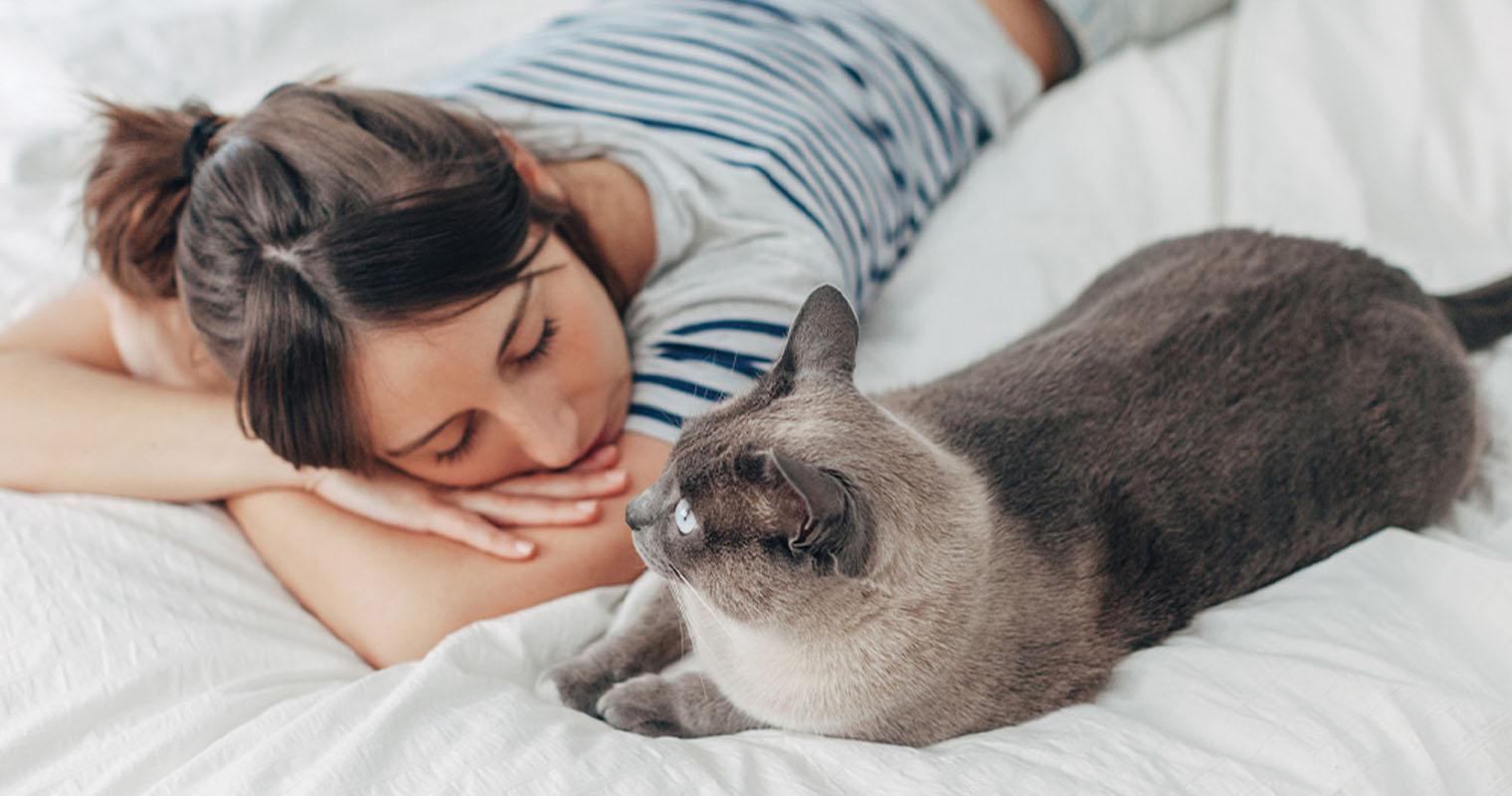
BONNINSTUDIO / Stocksy
So, you love cats. But they make your eyes water and itch, and you sneeze your head off every time they walk into a room. You’re not alone: Allergies to dogs and cats affect 10 to 20 percent of the population. Sadly, research shows that nearly 19 percent of pet parents who have relinquished a cat reported doing so because of allergies.
Here’s the good news: Cat parents (or aspiring cat parents) with allergies who are determined to bring a feline friend into their lives, and keep them for many years to come, can successfully do so.
The truth is, there’s no such thing as a completely hypoallergenic cat (or any other pet, for that matter). But some breeds tend to produce lower levels of the protein Fel d 1, which contributes to causing fewer allergy symptoms. Low-shedding cats can also be better for those with cat allergies, as less shedding means a cat is less likely to shed their allergen-inducing proteins around the house.
Cat allergies are caused by a reaction to the proteins found in a cat’s saliva, dander, urine, skin, and feces. Some cats might produce less of these proteins or are less likely to shed them, but all cats lick themselves when grooming, making it easy for them to spread these allergy-inducing proteins to your body and cause a reaction. Allergens are also carried on cats’ hair or dander and then settle on carpets, furniture, and even a person’s hair or clothing.
Just because a cat breed is considered hypoallergenic doesn’t guarantee that every individual cat of that breed will be allergy-friendly or that they won’t cause an allergic reaction for you. Choosing a cat that doesn’t trigger your allergies will take some trial and error, but there are steps potential cat parents with allergies can take to help reduce the effect of their allergies before adopting a cat.
For example, age, neuter status, and sex all affect allergen levels. All female cats and neutered male cats tend to produce lower levels of the most common allergen (Fel d 1) compared with unneutered males, so those with allergies would do better to adopt a female cat or neutered male cat. People with allergies should also consider adopting an adult cat because kittens produce fewer Fel d 1 proteins and may give you a false reading on how your allergies will react once they grow into adults. You can and should also do trial petting sessions before committing to adoption and know exactly how you’ll react.
There are also tests that can determine a cat’s allergen levels using only their saliva, but they can cost hundreds of dollars.
Some (but not all) cats within certain breeds, deemed “hypoallergenic” breeds, have been found to produce lower allergen levels, but, again, not all cats within the same breed produce the same levels of proteins. What’s more, any cat can have lower allergen levels, including those of “non-hypoallergenic” breeds such as Maine Coons, Persians, Savannahs, Bombays, and Domestic Shorthairs. Allergen levels are individual to each cat — you just may be more likely to find a match with a “hypoallergenic” breed.
Just note: A cat’s coat color, pattern, and length do not affect their level of allergens.
In addition to taking all of the steps and precautions above, cat lovers with allergies should consider the following hypoallergenic cat breeds.
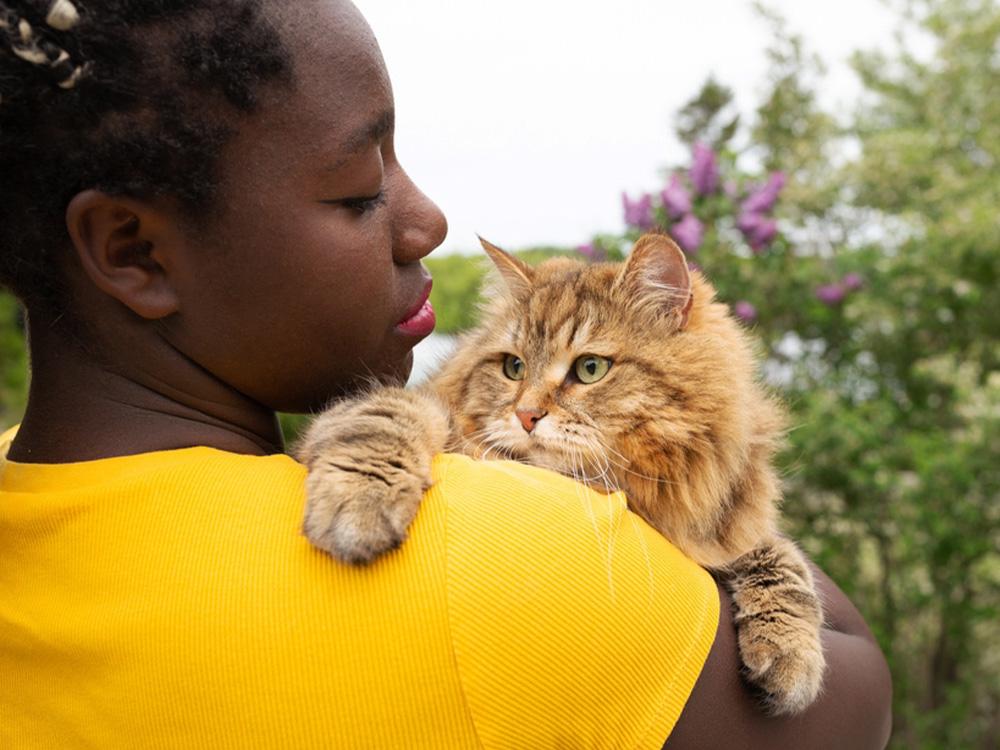
2059797446 / Shutterstock
Despite the Siberian’s long, dense coat, some researchers suggest that this breed is the most allergy-friendly cat because it produces different levels of Fel d 1 protein, the main protein that causes allergies, than other cats. These Russian domestic cats, sometimes called Siberian Forest Cats, have very calm dispositions, are quite friendly, and are good with kids and other animals, but they’ll often pick one person in the household to be especially close to.
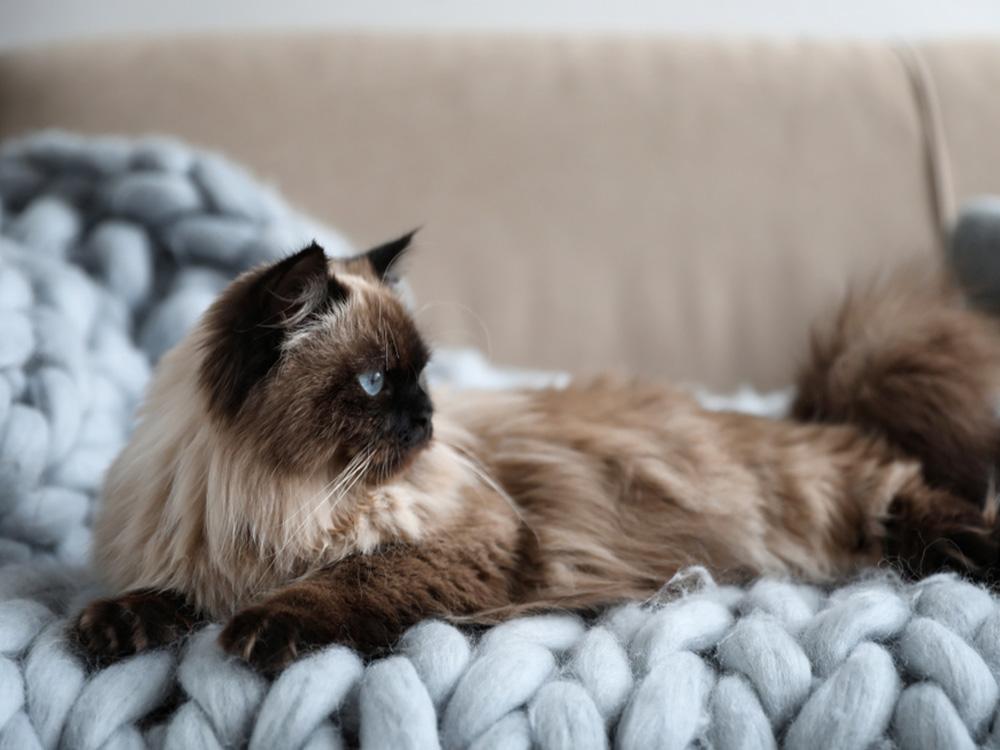
New Africa / Shutterstock
The Balinese, along with the Siberian, is one of a few cat breeds that produce less Fel d 1 protein than other breeds. This long-haired breed has the point coloration as the Siamese and are bred to be very friendly and outgoing — they’re talkative and will let you know if they’re not getting enough pets.
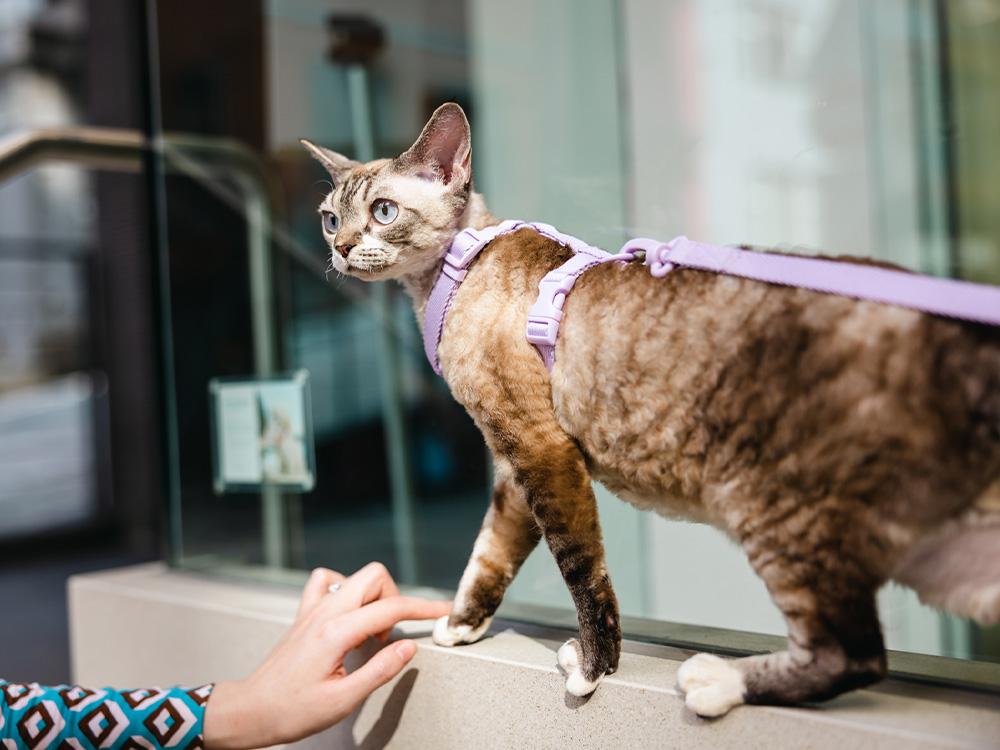
Heng Yu / Stocksy
The Devon Rex has a very notable coat: it’s short, soft, curly, and resembles hair more than fur. These cats shed less than many other cat breeds and can even sometimes be patchy or partially bald. This breed requires regular bathing to prevent the build-up of oil on their skin (which also helps prevent the spread of allergens). They have a distinct look, with oversized ears and eyes and a narrow chin, and are often on the smaller side. They need mental stimulation and can enjoy learning new tricks.

Lucas Ottone / Stocksy
Sphynx cats are probably the most famous of the “hypoallergenic” cats because their hairlessness makes them instantly recognizable. These cats still produce allergy-inducing dander, but they shed far less than other cats (for obvious reasons). Because of their hairlessness, this breed needs help regulating their body temperature in cold weather but they are generally willing to wear fun outfits, so that’s a bonus. They require a skin care regimen that most other cats do not because their oily skin is not protected by fur. These cats need consistent maintenance from their pet parents, including regular baths and being checked for recurring acne. Yup, these cats get pimples.
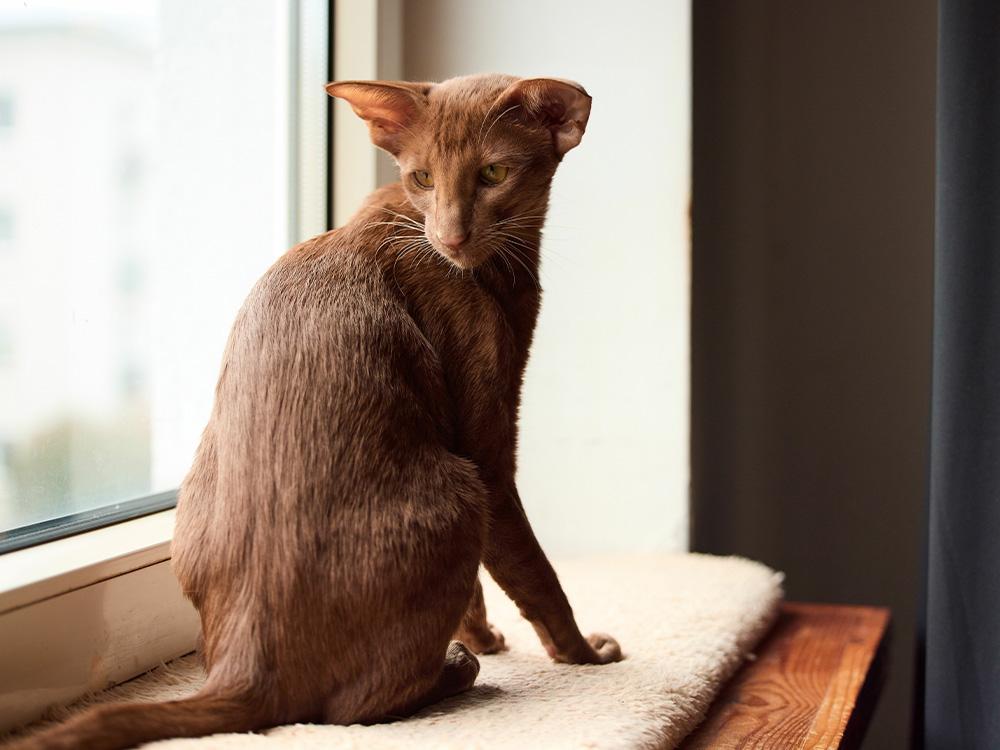
547804313 / AdobeStock
The lithe and muscular Oriental Shorthair cat may produce fewer allergens thanks to their short low-shedding coats. They self-groom but like to be brushed occasionally and appreciate focused attention from their pet parents and the company of other cats. These intelligent felines have batwing-like ears, long tapered noses, and meow with a distinctive honk.
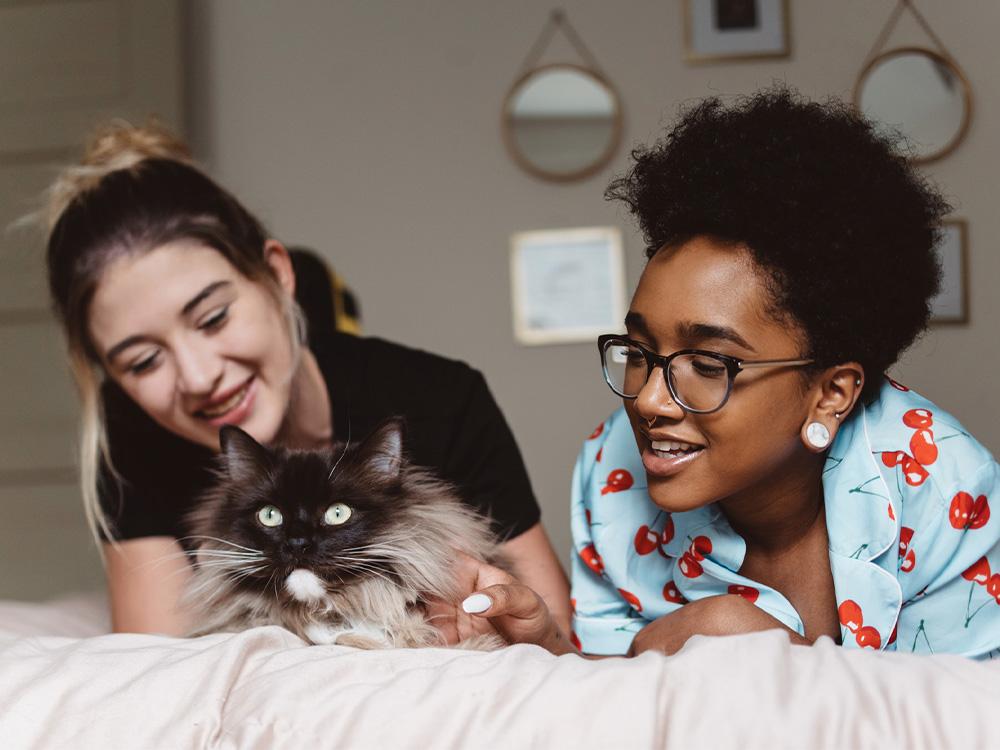
Chelsea Victoria / Stocksy
The Ragdoll’s plush coats are as soft as a cloud, making them irresistible to snuggle up with, but their semi-long coats shed minimally, so allergy sufferers may find that they have a milder reaction to this breed. These cats have a gentle and affectionate nature and are always eager to be by your side and shower you with love.
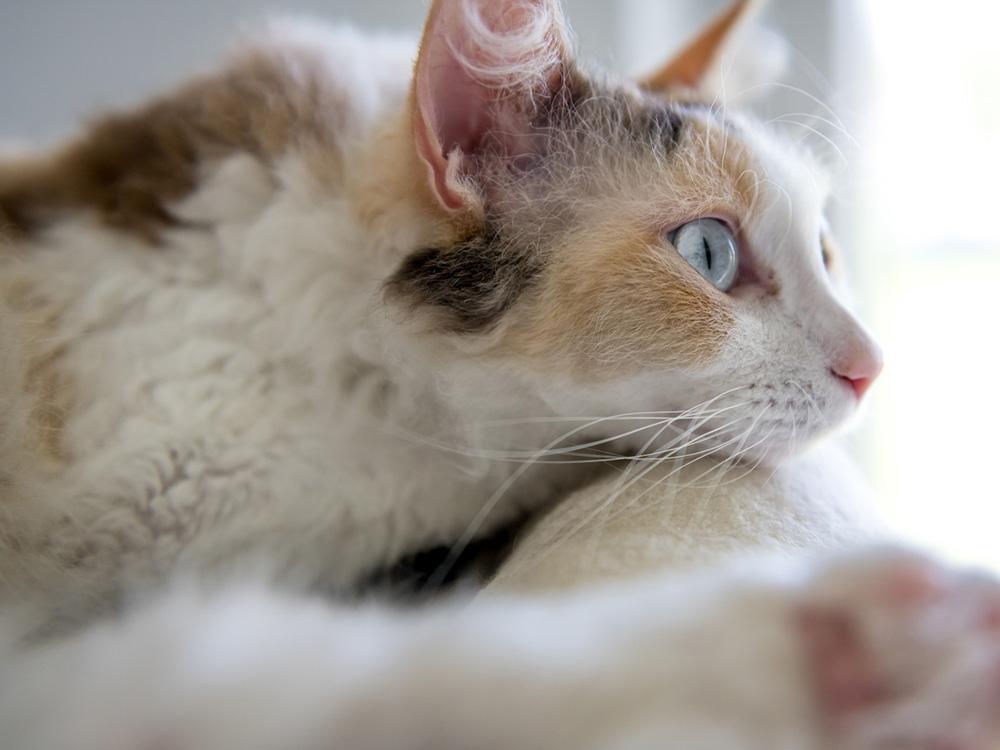
oxico / iStock
With short, low-shedding, curly coats, LaPerms are not very high maintenance and may be ideal for some allergy sufferers. They’re a hardy breed and aren’t associated with any particular health problems outside of what one would normally expect from any pet. Brushing them once a week or more during high shedding seasons will help keep them free of mats.
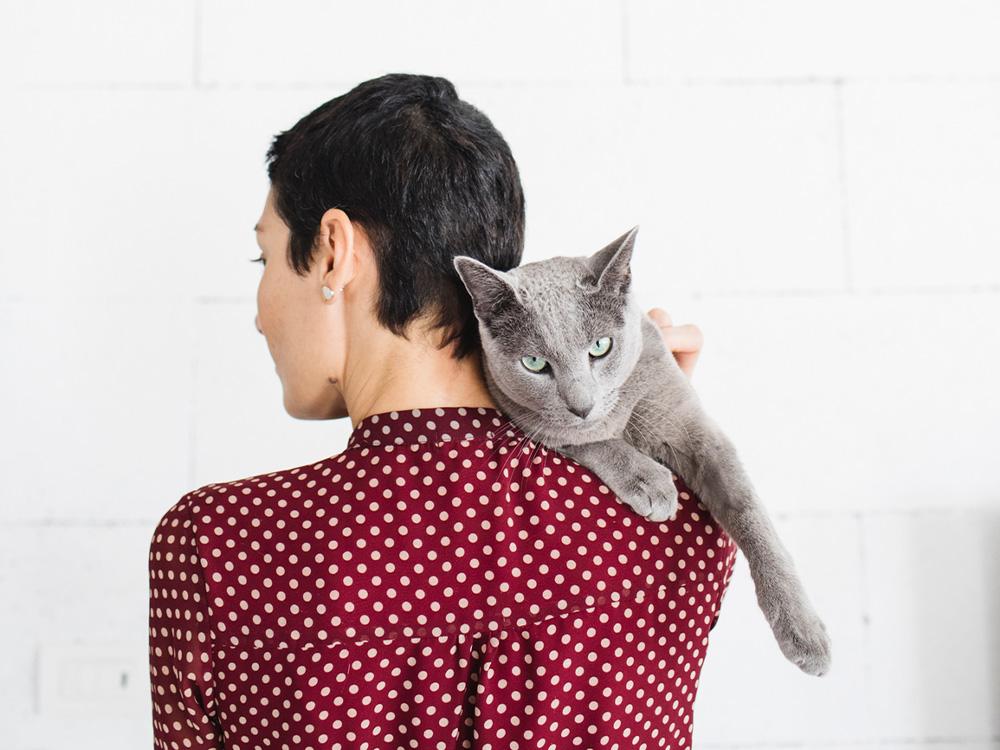
Michela Ravasio / Stocksy
The Russian Blue can be a cool gray or a vibrant silver shade and often looks like a more elegant house cat in size and muscularity. They have high cheekbones and big, round eyes that are usually a lovely green shade. Though they have thick coats, they don’t shed very much and may produce low levels of the protein allergen most people react to. They like to talk but aren’t terribly loud, so you can enjoy many quiet back-and-forth convos together.
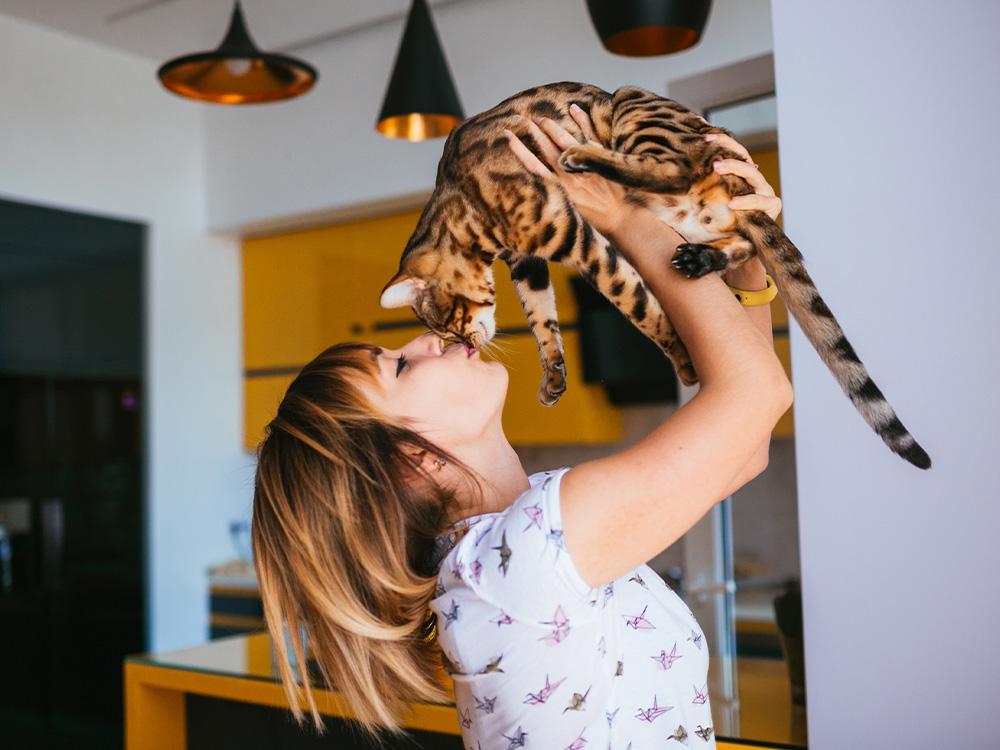
pyrozenko13 / AdobeStock
Bengal cats not only look different than most other cats thanks to being a hybrid cross with an Asian Leopard Cat, but they also don’t shed as much as other breeds. They also only have a single coat, so regular brushing should help contain their fur, and they do not self-groom as much as typical domestic cats, so they may spread fewer allergens. These strong, high jumpers have beautifully distinct, spotted coats, striped tabby-like bellies, and large pointed ears.
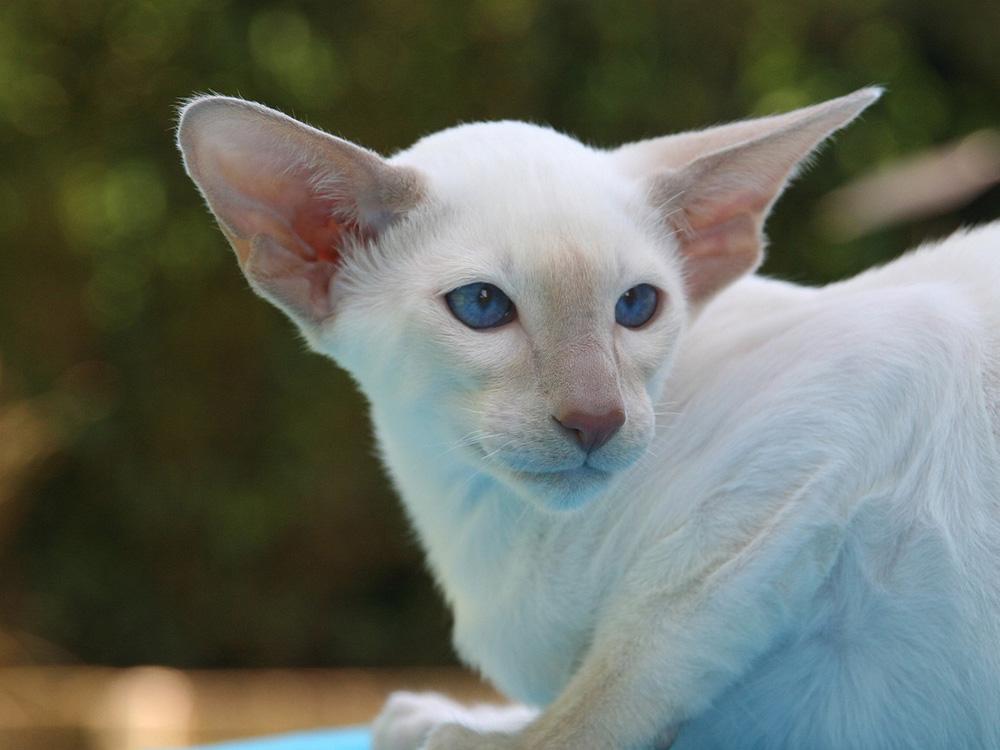
TaniaVdB / Pixabay
Javanese cats have short coats, no undercoats, and typically shed less than other cats, which leads them to produce fewer allergens than other cats. Related to the Siamese, this breed is very loyal to their people and good-natured but has a serious demeanor. They like to snuggle and sleep by your side and can be all different colors.
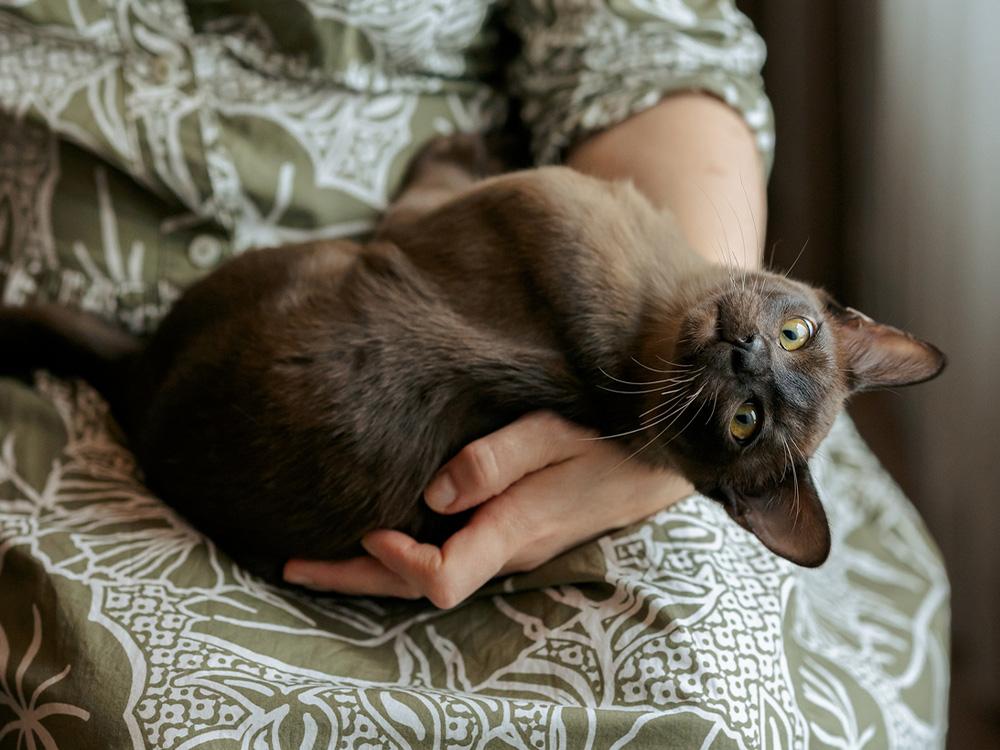
LARISA SHPINEVA / Shuterstock
Burmese cats are also related to the Siamese and have short low-shedding coats, which might be suitable for some allergy sufferers. This breed is often compared to dogs because they love learning tricks and playfulness. They will also talk your ear off; Burmese cats love to meow to get your attention and be cuddled. They tend to like other cats and even dogs, so they’re good for a home with a lot of stimulation and available attention.
Bathing your cat once a week reduces allergens, but remember — not all cats are bred to be bathed, and most are not into it. For finicky cats, try cat wipes. It’s always a good idea to check with your vet before adopting a bubble bath regimen.
There are a lot of strategies you can employ to minimize a reaction to cat allergens. Regularly cleaning your home, including frequently vacuuming and using a high-efficiency particulate air cleaner or HEPA filter for your HVAC will go a long way toward helping reduce allergy symptoms. So will washing your hands after petting or playing with your cat.
You can also consider keeping at least one room cat-free; the bedroom is a good choice because you spend hours at night breathing heavily with your mouth open there. At least keeping your bed off limits to your cat is worth considering, as allowing them to roll around on it spreads allergen proteins where you put your face for hours.
Vacuum frequently
Invest in HEPA filters
Keeping at least one room cat-free
Wash your hands frequently
Groom your cat outside of the house
There are hypoallergenic cat breeds that are likely to produce fewer allergens including the Siberian, Balinese, and the Russian Blue.
To help manage your cat allergies, choose a low-allergen cat, create a cat-free zone, do frequent grooming of your cat, clean your home regularly, and wash your hands after petting your cat.
People with allergies should look for low-shedding cat breeds that reduce the spread of dander. Adult cats are a good choice because they have stable allergen levels and spay or neuter your cat because it reduces allergen levels.
Yes, hypoallergenic cat breeds still produce Fel d 1 proteins and may cause allergic reactions.
To reduce allergens in the home vacuum frequently, groom your cat outside of the house, use an air purifier, and keep at least one room cat-free.
Yes, there are several over-the-counter and prescription medications that can help manage cat allergies including antihistamines, nasal sprays, eye drops, and allergy shots. Consult your doctor to determine the best treatment option.
There’s No Such Thing as a Hypoallergenic Cat
Polymorphism Analysis of Ch1 and Ch2 Genes in the Siberian Cat
Best Pets for People With Allergies
Allergy Sufferers Can Have Pets Too
The race to deliver the hypoallergenic cat
Do hypoallergenic cat breeds exist? Best cat breeds for allergy sufferers
Do hypoallergenic cats and dogs exist?
Human allergy to cats: A review of the impact on cat ownership and relinquishment
Fel d 1 levels in domestic living rooms are not related to cat color or hair length
Correlation Between Coat Color
Influence of time and phenotype on salivary Fel d1 in domestic shorthair cats
Study shows a change in feline diet could curb cat allergies in people